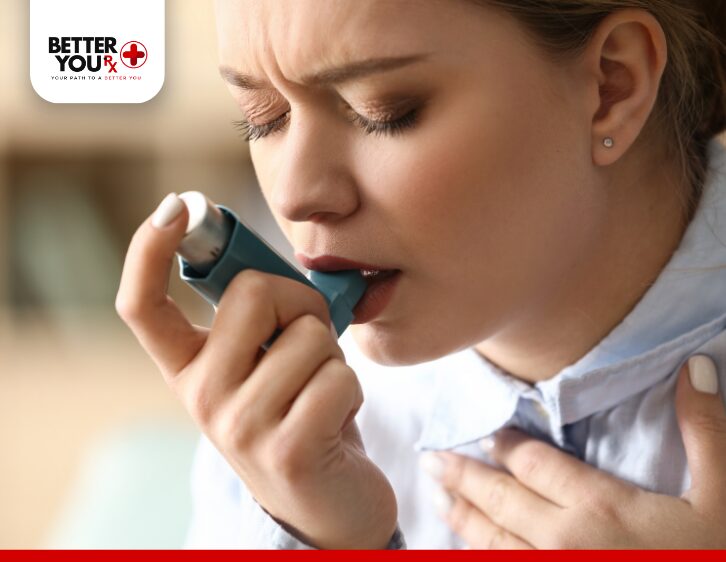What Is Eosinophilic Asthma and How Is It Different from Regular Asthma?
Have you ever wondered if all types of asthma are the same? While many people are familiar with the common symptoms of asthma—wheezing, coughing, and difficulty breathing—there’s a lesser-known form that’s a bit trickier to diagnose and treat. This is eosinophilic asthma, a more severe subtype that can be harder to manage. So, what makes eosinophilic asthma different from the more common forms? And how can you get the right treatment if you or someone you know is affected? Let’s dive into what sets this condition apart and how it’s managed.
Understanding Eosinophilic Asthma: A Rare and Severe Subtype
Asthma has long been thought of as a single condition, but medical research has shown that it’s actually a collection of different conditions. One of these subtypes, eosinophilic asthma, is still relatively rare but increasingly recognized by doctors. It’s a severe form of asthma that primarily affects adults, and it doesn’t respond well to typical asthma treatments. The inflammation that characterizes this form of asthma is driven by an overproduction of certain immune cells called eosinophils, which causes more severe swelling and airway restriction.
Eosinophilic asthma often requires specialized treatment because common asthma medications, like inhaled corticosteroids, are less effective for managing this condition. As research continues, new treatments are being developed, offering hope for those who struggle with this challenging form of asthma.
How Is Eosinophilic Asthma Different from Regular Asthma?

While asthma symptoms may seem similar across the board, there are key differences between eosinophilic asthma and more common forms of the disease. Here’s a comparison to help highlight the unique aspects of eosinophilic asthma:
- Onset and Age:
- Regular Asthma: Often begins in childhood, and it may improve or change over time. It is typically triggered by environmental allergens like pet dander, pollen, or dust.
- Eosinophilic Asthma: Generally develops in adults, often between the ages of 35 and 50. Unlike regular asthma, it’s not usually caused by allergies, making it harder to diagnose at first.
- Symptoms:
- Regular Asthma: Common symptoms include wheezing, coughing, chest tightness, and shortness of breath, often triggered by allergens or irritants.
- Eosinophilic Asthma: The symptoms are more centered around severe shortness of breath rather than wheezing. This can make it difficult to immediately identify as asthma, leading to potential delays in diagnosis.
- Treatment Response:
- Regular Asthma: Responds well to inhaled corticosteroids, which help reduce inflammation and prevent asthma attacks.
- Eosinophilic Asthma: Doesn’t respond effectively to standard inhalers, even at high doses. As a result, additional treatments, such as oral corticosteroids or biologic therapies, are often needed to manage symptoms.
What Causes Eosinophilic Asthma?
As with many types of asthma, the exact cause of eosinophilic asthma remains unclear. However, doctors have been able to identify some key factors that are more likely to contribute to its development:
- Immune System Overactivity: In eosinophilic asthma, the immune system produces an excess of eosinophils—white blood cells that are usually involved in fighting infections. These cells play a role in causing inflammation, which leads to the narrowing of the airways and makes breathing difficult.
- Environmental Triggers: While eosinophilic asthma is not usually triggered by allergies, certain environmental factors, like air pollution, viral infections, or respiratory irritants, may worsen symptoms.
- Genetic Factors: There may also be a genetic component to eosinophilic asthma, with some people having a genetic predisposition to an overactive immune response.
Despite these insights, the full mechanism behind why some people develop eosinophilic asthma and others don’t is still being studied. It remains an area of ongoing research in the medical community.
How Is Eosinophilic Asthma Diagnosed?

Diagnosing eosinophilic asthma can be a bit tricky because its symptoms often overlap with other respiratory conditions. Doctors will typically begin by ruling out other potential causes of the symptoms and consider factors like the patient’s age, medical history, and overall health.
Some of the common diagnostic methods include:
- Blood Tests: These can check for elevated levels of eosinophils, which is a hallmark of eosinophilic asthma.
- Spirometry: A test that measures how much air you can inhale and exhale and how quickly you can do so. It helps doctors assess the severity of airway obstruction.
- Exhaled Nitric Oxide Test: This test measures the level of nitric oxide in your breath, which can indicate inflammation in the airways.
- Imaging: In some cases, chest X-rays or CT scans may be used to rule out other respiratory issues, though these aren’t specific to eosinophilic asthma.
Treatment for Eosinophilic Asthma

Managing eosinophilic asthma requires a multifaceted approach, especially since it doesn’t respond well to typical asthma treatments. Here are the main strategies doctors use to treat this condition:
- Biologic Medications:
- Biologic therapies are a game changer for people with eosinophilic asthma. These drugs specifically target the pathways involved in inflammation caused by eosinophils. Some approved biologics include:
- Benralizumab (Fasenra)
- Mepolizumab (Nucala)
- Reslizumab (Cinqair) These medications are given through injections or infusions and can significantly reduce the frequency of asthma attacks.
- Biologic therapies are a game changer for people with eosinophilic asthma. These drugs specifically target the pathways involved in inflammation caused by eosinophils. Some approved biologics include:
- Oral Corticosteroids:
- While inhaled corticosteroids aren’t effective, oral corticosteroids can help control severe inflammation. However, long-term use of oral steroids can lead to side effects, so they are typically used for short periods.
- Inhalers and Bronchodilators:
- Even though inhaled corticosteroids are not highly effective, bronchodilators can help alleviate some of the airway constriction, making it easier to breathe.
- Lifestyle Adjustments:
- Managing triggers is an important part of treatment. This includes avoiding air pollutants, staying away from respiratory irritants, and minimizing exposure to infections. Regular checkups with a healthcare provider are crucial to monitor the condition and adjust treatments as needed.
Outlook and Quality of Life
Eosinophilic asthma can significantly impact quality of life, given its severe nature and the challenges in treatment. However, with the advent of biologic treatments, many people with eosinophilic asthma experience better symptom control and fewer attacks. New therapies are rapidly changing the landscape of asthma care, offering hope for improved outcomes and a better quality of life for those living with this condition.
If you suspect you may have eosinophilic asthma, or if your asthma symptoms don’t seem to improve with standard treatments, it’s important to talk to your doctor. With early diagnosis and appropriate treatment, managing eosinophilic asthma has become more achievable than ever before.
Conclusion
Eosinophilic asthma is a rare and severe form of asthma that doesn’t respond well to traditional asthma treatments. It primarily affects adults and is caused by an overproduction of eosinophils, leading to inflammation throughout the respiratory system. While there’s no definitive cause, environmental triggers and immune system activity play key roles. New treatments, particularly biologic therapies, have revolutionized care for those with eosinophilic asthma, offering hope for better management and improved quality of life. If you’re living with asthma that isn’t responding to regular treatment, it may be time to ask your doctor about eosinophilic asthma and explore more targeted treatment options.









